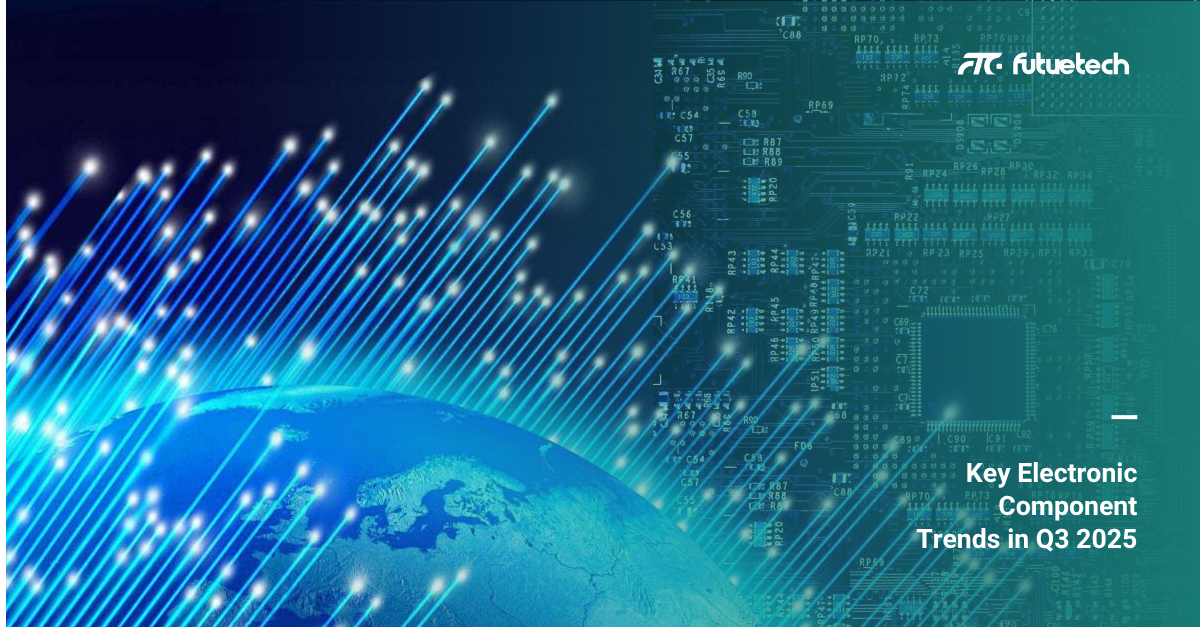1. Memory Market: DDR4 Phase-Out Accelerates, DDR5 Adoption Gains Momentum
During H1, the top three DRAM suppliers—Samsung, SK Hynix, and Micron—continued to reduce DDR4 production, leading to tighter supply and consistent price increases. At the same time, DDR5 mass production has accelerated, with pricing beginning to approach DDR4 levels. With increasing bandwidth demands driven by AI workloads and next-gen servers, enterprise customers are expected to shift to DDR5 more aggressively in Q3, while DDR4 prices remain elevated in the short term—especially for enterprise ECC modules and high-speed variants.
Recommendation: Secure DDR4 volumes early for mid-to-long-term use or begin transitioning to DDR5 or low-power LPDDR5/5X based on application needs.
2. Power Management ICs: High-Voltage LDOs and PMICs Rise with AI Edge Demands
Q3 Outlook: High-efficiency, highly integrated PMICs are gaining traction in smart wearables and in-vehicle infotainment systems. Complementary components such as MOSFETs and magnetics are also ramping up.
Recommendation: Prioritize models with strong thermal management and supply reliability. Leverage trusted distribution channels to ensure stable project timelines.
3. Automotive Electronics: Sensors and CAN Transceivers in the Spotlight
With the fast rollout of intelligent cockpits and ADAS systems, demand for AEC-Q qualified sensors (IMUs, environmental, optical) and interface ICs (CAN, LIN, FlexRay) remains robust. Manufacturers like TDK, NXP, and ON Semiconductor are aggressively expanding their automotive portfolios, though certain components still face lead times of 12–20 weeks.
Q3 Trend: As Chinese OEMs diversify their Tier 1 supplier base, local alternatives for automotive-grade components are gradually gaining ground, offering a compelling cost-performance balance.
Recommendation: Validate AEC-Q compliance early and develop contingency plans for long-lead items to ensure supply continuity.
4. Passive Components: MLCC Tightness in High Capacitance and Automotive Grades
Japanese manufacturers like Murata and TDK remain dominant in high-capacitance, automotive-grade, and specialty-sized MLCCs. In H1 2025, automotive MLCC shipments grew over 15% YoY, with specific shortages seen in 0201–0603 high-capacitance types for ADAS and AI edge devices.
Q3 Outlook: With overlapping surges in AI terminals and EV production, supply pressure on mid- and high-end MLCCs is intensifying.
Recommendation: For applications with compatible voltage and temperature specs, consider qualified local brands such as Yageo and Walsin through reliable distributors.
5. Analog & Interface ICs: Industrial and Medical Demand Rebounding
Industrial automation and medical electronics began recovering in Q2, boosting shipments of amplifiers, ADC/DACs, and transceivers (e.g., RS-485/232). Analog Devices, Maxim, and TI have all launched new products tailored for edge computing scenarios.
Q3 Trend: Components offering low power consumption, wide temperature, and voltage range are in higher demand. Some hard-to-replace or specialized packages still face localized shortages.
Recommendation: For long-lifecycle projects, evaluate long-term supply assurance and multi-regional sourcing capabilities.
6. Supply Chain Strategies: Diversified Sourcing and Local Alternatives Take Hold
With increasing geopolitical risk and tightening export controls, customers in Southeast Asia and emerging markets are turning to diversified sourcing and qualified local alternatives to manage risk and cost.
As a trusted global distributor, Futuretech Components has built a stable supply network and offers:
● Technical support for mainstream components and high-quality alternatives
● Flexible sourcing and inventory solutions for tight-supply items
● Compliance and traceability services tailored for automotive and industrial customers
Conclusion: Strategic Positioning for a Dynamic Q3
Q3 2025 presents a critical window to capitalize on AI, electrification, and connectivity megatrends. In the face of price fluctuations and rapid product evolution, working with a distribution partner that offers global insight and local responsiveness is essential to staying ahead.
Futuretech Components will continue to track market trends, share expert insights, and support clients in selecting the right components and navigating supply chain complexities—ensuring sustainable and efficient business growth.
For more information on product trends, selection support, or inventory solutions, please visit our website or connect with the Futuretech team directly.


